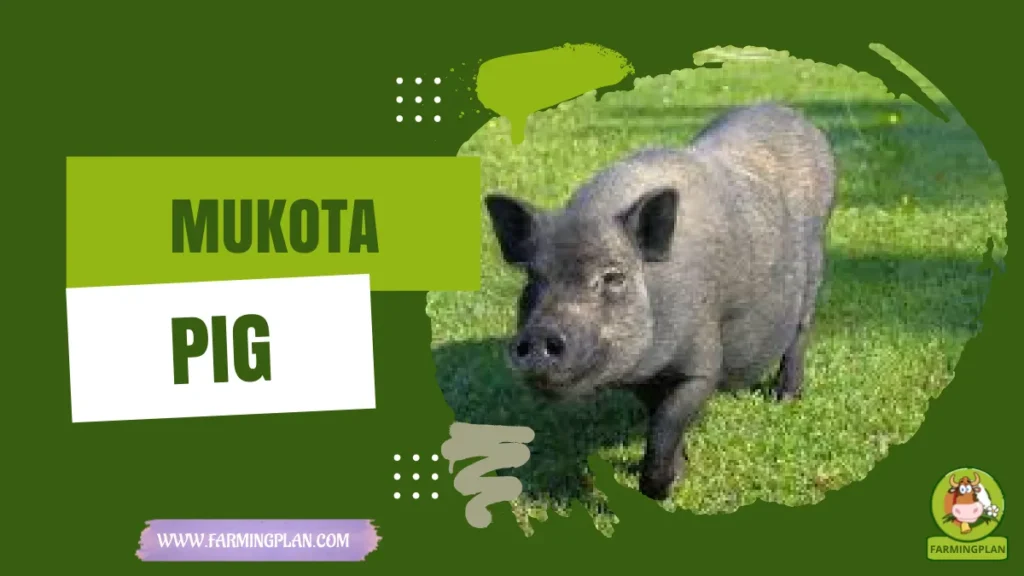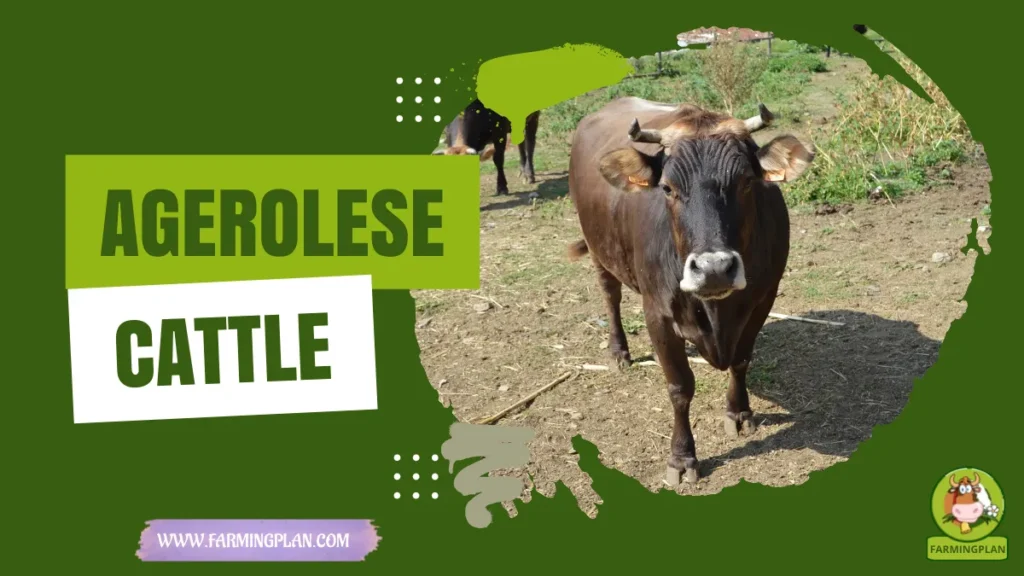If you’re into heritage breeds with deep roots and real farming value, let me tell you about the Black Slavonian Pig. Known as Crna slavonska svinja or Fajferica, this pig hails from Slavonia, Croatia, and it’s more than just livestock—it’s a living piece of history. I first came across them in Osijek and was instantly impressed. These pigs are tough, tasty, and perfect for outdoor systems. Whether you’re in it for profit, preservation, or just the pleasure of raising a truly special breed, the Black Slavonian Pig delivers.

History & Origin of Black Slavonian Pig
The story of the Black Slavonian Pig begins in the 19th century, during the Austro-Hungarian Monarchy. Count Karl Pfeiffer, based in the fertile region of Slavonia, aimed to create a hardy pig breed that could withstand the local conditions. He crossbred Berkshire and English Large Black boars with local Slavonian pigs, laying the foundation for what we now call the Black Slavonian or Pfeiffer pig.
By the 1870s, these pigs were prized across the empire. They even made it to international exhibitions in Vienna and beyond. Their popularity grew not just in Croatia but also in neighboring countries like Serbia and Hungary. Despite the rise of factory farming and imported commercial breeds, the Black Slavonian survived in rural outposts, particularly around Osijek and Donji Miholjac. Efforts to preserve the breed have increased recently thanks to organizations like Slow Food’s Ark of Taste and genetic research initiatives like TREASURE and eROHi. Trust me, keeping this breed alive isn’t just about farming – it’s about protecting biodiversity, culture, and flavor.
Read More: A black Helmet pigeon is a rare beauty!
Characteristics of Black Slavonian Pig
The Black Slavonian Pig is sturdy, black, and downright beautiful. Their sleek coat, floppy ears, and muscular build make them easy to spot and hard to forget. Most pigs weigh between 180–200 kg for sows and up to 250 kg for boars. They adapt well to outdoor farming systems, particularly in wooded or semi-open pasture areas.
Their carcass traits are impressive, producing high-quality meat with excellent marbling, especially intramuscular fat – key for making delicacies like kulen and kulenova seka. The longissimus muscle and backfat thickness are perfect for dried meat products, making them a top choice for traditional sausage-making. One thing I love about them is their overall hardiness. Whether it’s a dry summer or a snowy Croatian winter, these pigs keep going strong. Their gene pool still contains admixtures from breeds like Swedish Landrace and Mangalitsa, giving them extra adaptability.
Read More: Vietnamese Potbelly Pig: A Race from Vietnam
Nature & Temperament of Black Slavonian Pig
Let me tell you, Black Slavonian pigs are not just pretty snouts – they’re clever, calm, and very social. They bond well with handlers and are surprisingly trainable. I’ve raised many breeds, but these guys are hands-down among the easiest to manage.
They show little aggression, which is great if you’re running a mixed-age group or managing several pigs in one pen. Their foraging behavior is strong, making them perfect for outdoor systems, especially ones with oak-rich environments like Slavonian oak forests. They love routine, thrive with gentle human interaction, and can be trained to respond to feeding times, bells, or even their names (my boar “Sin Ravnice” comes when I call). If you’re looking for pigs that won’t wreck your nerves or your fences, this is the breed for you.
Read More: Jinhua Pig: China’s Ancient Breed of Pork!
Food & Diet
Feeding Black Slavonian pigs isn’t rocket science, but there are tricks to getting the best results. These pigs do well on grains like corn, barley, and wheat. I often add clover, pumpkins, and other seasonal crops to diversify their diet. They love acorns, so if you’re near oak trees, let them forage.
Avoid industrial feed filled with hormonal preparations or antibiotics – go organic if possible. These pigs convert feed well and grow steadily, especially in the fattening stage. Always provide clean water and access to mineral supplements, particularly calcium and phosphorus for bone development. During winter, I supplement with cooked root vegetables and dried hay. For piglets, I use a gentle starter feed with extra protein for the first few weeks. Remember: A well-fed pig isn’t just heavier, it’s healthier and more flavorful.
Usage & Purpose
The Black Slavonian Pig is primarily raised for meat production. And not just any meat – we’re talking top-tier, rich-flavored pork ideal for sausages, smoked cuts, and traditional specialties. Think kulen, kulenova seka, and dried meat products that rival any gourmet charcuterie.
They also have strong genetic vigor, making them suitable for crossbreeding. Some farms use them to improve local pig breeds by boosting disease resistance and meat quality. Their robust nature also makes them ideal for outdoor farming or organic livestock systems. While not typically pets, their friendly nature and cultural value mean they sometimes appear in educational farms or conservation projects. And hey, who wouldn’t want a pig that makes history and ham?
Special Features
So what makes the Black Slavonian pig special? First off, it’s one of the few remaining indigenous breeds of Croatia, recognized for its genetic diversity, resistance to climate change, and ability to thrive without antibiotics.
Their flavor profile is unique due to the marbling and fat quality. This meat isn’t just food – it’s art. It’s no wonder top chefs in places like Zagreb and Vienna pay a premium for Black Slavonian pork. They’re also listed in the Slow Food Ark of Taste, making them a gastronomic and genetic treasure. These pigs mature slower than commercial breeds, but that’s part of their magic. Good things take time – and with these pigs, the wait is worth it.
Health Issues & Prevention
Like all pigs, Black Slavonians are susceptible to diseases like PRRS (Porcine Reproductive and Respiratory Syndrome). That’s why I always monitor ventilation and sanitation in my barns. Roof panes and wooden laths help regulate airflow and temperature.
Vaccinate piglets early and follow up on deworming schedules. Keep an eye out for signs like coughing, lethargy, or reduced appetite. Isolation pens are a must for any suspect cases. Make sure your piglets come from healthy stock – I source mine from trusted breeders in Donji Miholjac. Genomics research, including iHS analyses and SNP chips, is helping us better understand genetic vulnerabilities. But for everyday farmers, the basics still matter: clean water, good feed, enough space, and regular vet checks.
Step-by-Step Farming Guide
Raising Black Slavonian pigs takes heart, planning, and a little mud. But trust me, the results are worth it. Here’s my go-to guide for setting up a productive, ethical, and healthy pig farm.
Step 1: Build A Safe Shelter
You need good ventilation, strong fencing, and protection from extreme weather. I use traditional wooden barns with galvanised steel partitions. Add roof panes for airflow and position the barn near a manure pit for easy cleanup. Keep the barn cool in summer and warm in winter.
Step 2: Choose Healthy Stock
Start with piglets from reputable breeders or certified eco farms like Black Slavonian Eco Pig Farm. Look for alert eyes, strong legs, and a good appetite. Avoid signs of diarrhea, coughing, or skin lesions. Early health determines lifetime productivity.
Step 3: Set A Feeding Routine
Feed them twice daily. Morning: grains and greens; Evening: protein and veggies. Let them forage mid-day if you’ve got land with clover, pumpkins, or oak trees. Don’t forget water – pigs drink a lot!
Step 4: Monitor Health Regularly
Check for signs of illness and keep vaccinations up to date. Track their weight and growth every two weeks. Use natural remedies when possible, and call a vet if symptoms persist. Rotate pastures every few months to prevent parasite buildup.
Step 5: Plan For Breeding Or Sale
Once your pigs reach maturity, decide: breed them, fatten them, or sell them. If breeding, avoid inbreeding – study your pigs’ genetic background. Use tools like neighbor-joining trees and multidimensional scaling to plan matings.
Expert Tips & Best Practices
- Let pigs forage near oak trees – acorns boost flavor.
- Rotate pens every 2–3 months to manage parasites.
- Use organic feed for better meat and happier pigs.
- Mix clover and pumpkins into their diet for seasonal nutrition.
- Build shelters using local materials like wood and galvanized steel.
- Keep a breeding record to avoid inbreeding and boost genetic vigor.
- Join regional cooperatives like the Vuka River Regulation Cooperative.
- Use CRISPR-free genetics to maintain breed authenticity.
Good Pig Farming Starts With Good Observation – Watch Their Ears, Listen To Their Grunts, And Learn Their Rhythm.
FAQ
What is the Black Slavonian Pig known for?
It’s famous for its flavorful meat, resilience in outdoor farming, and deep historical roots in Croatia.
Can I raise Black Slavonian pigs organically?
Absolutely. They’re ideal for organic systems due to their low-input needs and disease resistance.
How long does it take to fatten a Black Slavonian pig?
Typically 10–12 months, slightly longer than commercial breeds, but the meat quality is far superior.
Is the breed endangered?
It’s classified as a traditional breed under protection, with preservation efforts ongoing across Croatia and Europe.
What makes their meat different?
Intramuscular fat and slow growth give their meat superior taste, perfect for traditional sausages and cured meats.
Conclusion
The Black Slavonian Pig isn’t just another farm animal – it’s a symbol of sustainable farming, cultural heritage, and premium pork production. From Count Pfeiffer’s vision in the 19th century to today’s eco farms, this breed has stood the test of time. It’s strong, adaptable, and a perfect fit for anyone looking to raise pigs the traditional way. Whether you’re a hobbyist, breeder, or serious farmer, I promise this breed will reward you with great meat, loyal pigs, and a deep connection to Croatia’s farming roots. If this guide helped you, don’t forget to share it, leave a comment, or pass it along to a fellow farmer or foodie!


